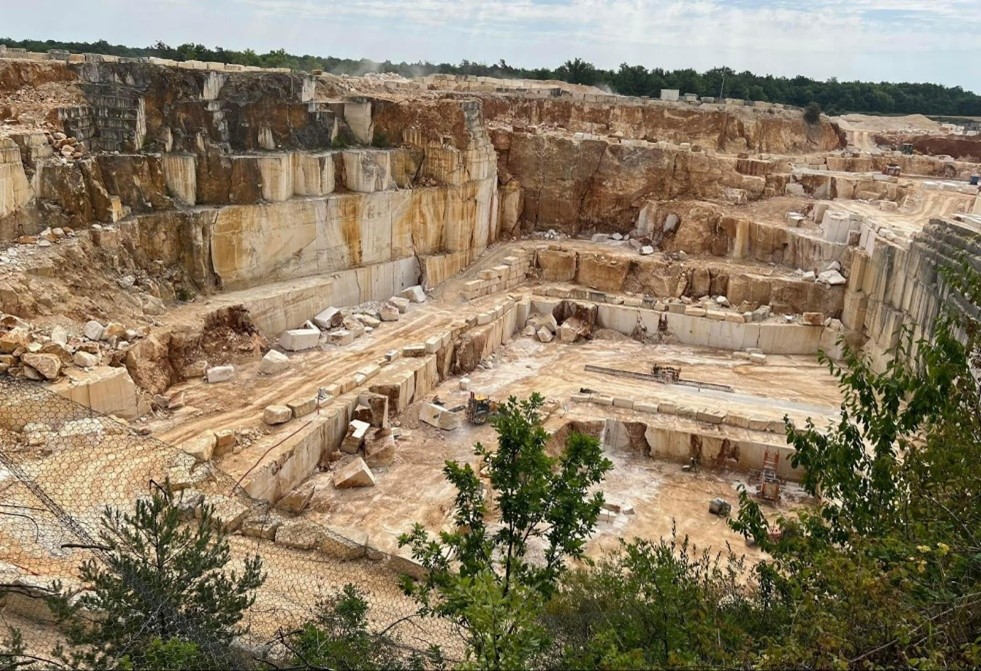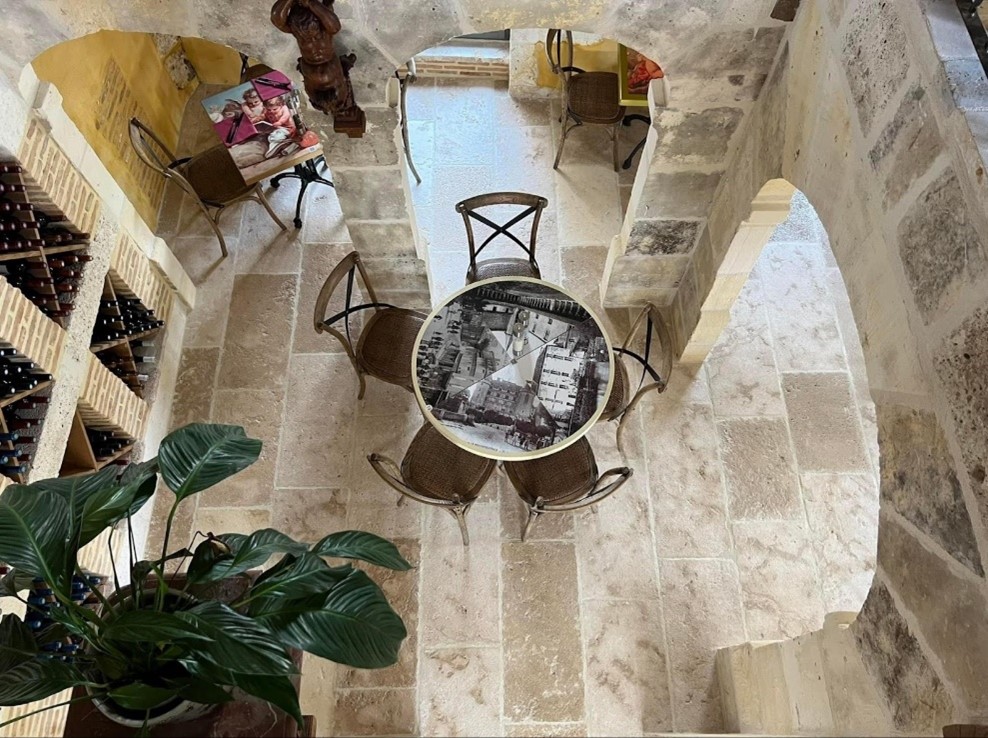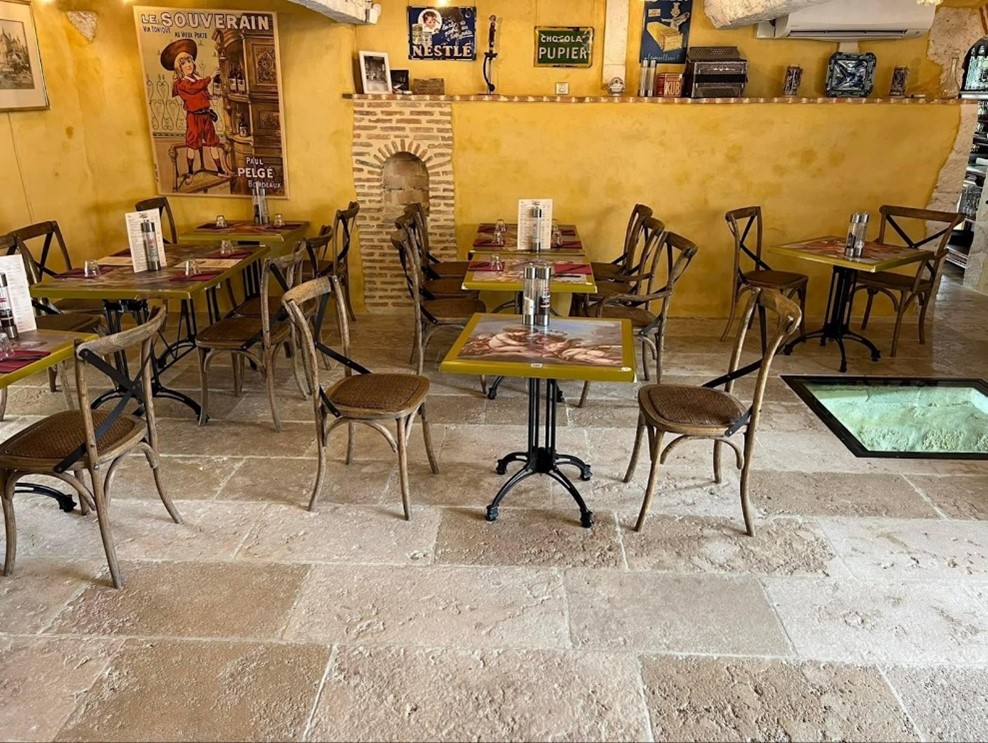Our French limestone tiles make quite a journey from the quarry to your home. Learn about limestone quarries, how we choose limestone, different types of limestone, and more.
What is Limestone?
Before limestone becomes part of your home project, it must be quarried from limestone-rich areas. Limestone is a sedimentary stone that is formed when smaller rocks and stones are pressed together in shallow rivers, lakes, and hot springs that contain calcium-rich shells and fossils. Limestone is usually white due to impurities, but comes in various colors that will be perfect for your next project.

What is a Limestone Quarry?
A quarry is a natural rocky area from which we collect stone. Limestone quarrying is a mining practice that involves finding a minimal break in the stone and removing it from the ground. Limestone exists in France, Italy, the Middle East, and other locations throughout the world. Our French limestone comes from a few specific parts of France.
To ensure that we source high-quality stone for your projects, we personally visit quarries, including one located in the Bordeaux region of France, to choose the limestone we carry in our shop.

Choosing the Right Limestone for Your Home Design Project
We are specialists when it comes to sourcing reclaimed stone. Choosing limestone requires intimate knowledge and understanding of limestone and how it is going to be used. According to the American Society for Testing and Materials International, three categories of limestone include Light Duty, Medium Duty, and Heavy Duty.

Class I or Light Duty Limestone
This limestone is the softest of the three classes. Because it is so malleable, it is best used for carving. Choose this limestone for decorative pieces like fireplaces, crown molding, and art pieces.
Class II or Medium Duty Limestone
This stone is harder than Class I but softer than Class III and is used best for kitchen and bathroom flooring projects.
Class III or Heavy-Duty Limestone
This is the hardest limestone and is comparable to marble and is best used for commercial projects or countertops. Use this limestone class when completing a highly trafficked area of your home, like a patio, or in a commercial business.
Types of Limestone
While all limestone is made of sedimentary rock found in shallow waters, limestone is available in a variety of types, depending on where and how it is formed.
Travertine Limestone
Travertine limestone is formed in caves by the precipitation of calcium carbonate on stalagmites and stalactites. This limestone is usually used in the home for kitchen or bathroom countertops or backsplashes.
Tufa Limestone
Tufa limestone forms in or near lakes and hot springs that have a high calcium concentration. It’s usually light in color and can come in white, beige, or grey. This limestone makes good tile flooring.
Coquina Limestone
This type of limestone is formed from broken shells, often on beaches. You can sometimes find fossils and shells throughout the tile, which makes it a great choice for pools, spas, and patios.
Best Uses for Limestone for Architectural Design
Limestone is very durable, making it the best stone for almost any design project, including floor tiles and columns. It’s available in many colors that will complement any decor and versatile enough to be used in buildings, flooring, countertops, and facades. Whatever design you are hoping to achieve, limestone can have a place there.

Limestone as Decorative Stone
Limestone custom home features enhance almost any living space, including copings at the top of walls, columns, stairs, molding over doors and windows, and decorative plaques. Fireplaces designed with limestone add unique architectural elements to your home.
Limestone is very durable, making it the best stone for almost any design project, including floor tiles and columns. It’s available in many colors that will complement any decor and versatile enough to be used in buildings, flooring, countertops, and facades.


Limestone for Historic Building Restoration
Throughout history, architects have valued limestone as a natural building material that is beautiful and weather resistant. Today, limestone is often used in the restoration of historic buildings.

Limestone Tiles and Flooring
Use limestone tiles for backyard spaces, including pools and patios, and for bathrooms and kitchens. French limestone slabs are hardened due to pressure and heat, making them durable, adaptable, and less likely to crack or break. Properly maintaining your limestone floor can help ensure that it will last longer.

Limestone is perfect for almost any project. If you are interested in using French limestone for your project, contact TileStone Distributors today, and we will help you choose the right stone for your next flooring or architecture project.

